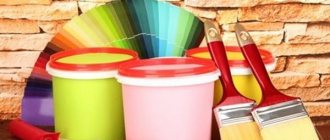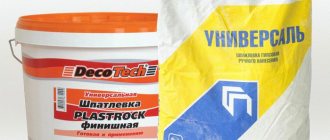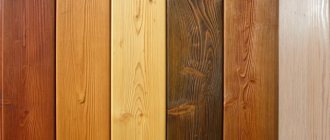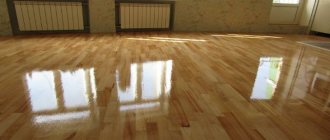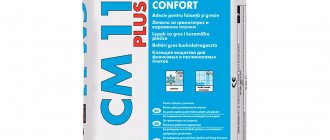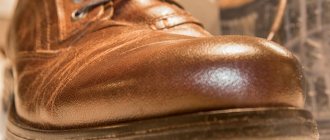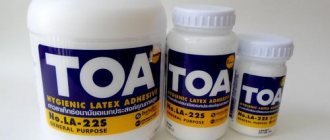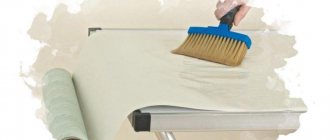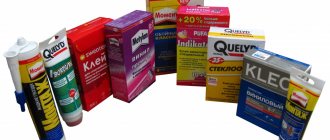Anaerobic adhesive "Loctite"
Loctite products are used for fixing and gluing threaded connections, allowing subsequent disassembly with conventional tools. The composition, placed in the space between adjacent metal elements, hardens due to the lack of air. It prevents loosening and damage from vibration and shock. The anaerobic agent is intended for stainless steel items with galvanic surfaces.
Requirements for glue for metal
In order for metal parts to be joined using glue, you need:
- know how the product will be used under what conditions. An item can stand idle on a shelf, decorating it with its presence;
- what final strength the connection must withstand after gluing;
- what loads have to be taken. For example, it is possible that there is only a small static load. There are nodes that experience dynamic loading;
- what needs to be glued to what, when connecting two metal parts, they are guided by the characteristics of the metals. Gluing of metal and porous material is possible, but the conditions for fixation will be different.
Metals corrode due to moisture in the air. Some binders lose their properties when wet. They simply swell and the glued parts fall off. Operating conditions may require the finished device to be located outdoors. Here the glue must be waterproof and can withstand temperature changes. So, metal adhesive must provide a number of conditions of use:
- ensure maximum connection strength to ensure reliable use of parts;
- maintain its properties for a long time;
- maintain the quality of gluing regardless of temperature;
- be water resistant;
- shrinkage after curing should not be large;
- be chemically neutral and protect the bonding site from corrosion.
To correctly perform an adhesive connection, you need to take into account the physical and mechanical characteristics of the materials, as well as the geometric features of the objects.
Loctite instant adhesive
In addition to the anaerobic fixative, glue for household needs is sold. The second composition is produced in Ireland and delivered to Russia in finished form. Product packaging contains information in Russian.
The product was included in the Guinness Book of Records as the strongest glue. It is used in many areas, connecting not only surfaces, but also threads and bushings.
Experts conducted an experiment that allowed them to accurately determine that the glue has super-strong properties. They glued 2 cars, whose total weight was more than 5 tons, to a metal beam using just 9 drops of the compound. The crane then lifted the cars to a height. The combined equipment was kept in the air for some time.
The product firmly fixes wood, metal, ceramics, glass, rubber. It combines both identical materials and those with different properties - metal and ceramics.
Criteria for choosing the strongest glue
If you urgently need durable glue, it is important to familiarize yourself with some of the features and characteristics of specific examples.
When choosing, it is important to consider:
- operating conditions of the glued product,
- ease of work,
- thickness of the adhesive seam,
- toxic properties of the solution,
- seam elasticity,
- the type of material is an important criterion. The materials have different structures.
For example, plastic has a fairly smooth and even surface. This makes it difficult to obtain the excellent adhesion required. If you need to glue vinyl wallpaper, then any wallpaper adhesive will not work. You will need to choose the strongest glue that can withstand a fairly large weight of the canvas.
Liquid nails Siroflex
In everyday life, this glue is just a godsend. Thanks to its innovative formula, it stands out among others. The adhesive composition will help secure any furniture and objects in the house - a mirror on the wall, holders and shelves. Eliminates the need to use nails and dowels.
Among similar products, Siroflex has collected the maximum number of positive reviews.
Features of waterproof glue
Waterproof adhesive fully meets moisture resistance standards. It is widely used for external and internal work; the adhesive is selected according to the water resistance class.
Even with high air humidity, this glue does not soften and adheres well to the surface for many years.
The absence of abrasives in its composition can also be considered an advantage of the product, since it does not have a destructive effect on the materials with which it comes into contact.
In bathrooms and sanitary areas, waterproof adhesive is often used as an additional layer of waterproofing, which protects the surface from mold and mildew. When working with metal, plastic or wood, it is best to choose an adhesive with a high water resistance class.
Ground Hide Glue
Often people working with wood are faced with the need to connect individual pieces without the use of nails and a stapler. There are many requirements for adhesive bases for wooden surfaces:
- strength;
- transparent texture;
- the ability to squeeze out a small amount without overall loss of remaining contents;
- no smell.
Ground Hide Glue meets these criteria. It performed well when gluing elements from different types of trees.
What does the marking on plastic mean?
- PET low density polyethylene or polyethylene terephthalate. It is mainly used for packaging or packaging food products. Available in the form of film, bags or transparent containers for liquid and bulk goods, as well as drinks.
- HDPE compacted low pressure polyethylene. Used for the production of shrink film and packaging bags.
- V (PVC) polyvinyl chloride is a non-food plastic used for the manufacture of strong and durable items, such as household buckets, metal-plastic window frames, and linoleum.
- LDPE Low density polyethylene of high pressure. Used in the production of bottles for drinks and dairy products, packaging bags, toys, cold water pipes.
- PP polypropylene. Plastic is not chemically active, heat-resistant (up to 150 °C), and is most widely used in the production of medical goods, heat-resistant dishes and household utensils, toys, pipes and fittings for hot water, and much more.
- PS polystyrene. Also food grade plastic, it is used to make disposable tableware, household utensils, and kitchen appliance housings. If it is foamed, it forms an excellent porous heat insulator - polystyrene foam, used in everyday life and in construction work.
- O Other (others) - materials that are not intended for recycling, for example, with inclusions of metal, paper or other substances). This also includes plastics that do not belong to one of the six groups.
PS - polystyrene
To reliably glue plastic, you need to carefully examine the markings on the product and select an adhesive intended for polymers of this group. There is another way to determine the type of plastic - a small piece of it must be set on fire. Each type burns with a characteristic smell and type of flame. To reliably use this method at home, you need to gain considerable experience.
Montagekit Extreme Grip
The product is characterized by high strength. It is easy to apply and copes with uneven surfaces. Many builders use it to assemble materials - wood, stone, concrete, metal.
Using glue, skirting boards, slabs, and panels are securely fixed. At home, you can stick on decorative signs, hooks for towels, and clothes.
Choosing the best all-purpose glue
In order to choose and buy the best universal glue, you need to pay attention to its composition and features. The most proven and popular compositions, according to the recommendations of repair professionals, include the following product options:
- Epoxy adhesive. It is characterized by high strength. Provides and guarantees resistance to both mechanical and chemical influences.
- PVA is a common glue that has a variety of options with additives and concentration of substances. Easy to use at home.
- Montagekit Extreme Grip allows you to achieve high grip on any chosen surface.
Thus, we can conclude that there are a small number of universal glue options. All are of high quality, excellent adhesion to different materials.
Glue "Bison for textiles"
The product is attractive to women. It combines textiles, different materials, jute, corduroy, jeans. Fashionable elements, rhinestones, patches are easily glued to the surface.
Women also use the product for edging furniture and attaching upholstery to it. This is the most worthy composition that housewives and needlewomen love.
How to glue plastic and rubber together
When repairing household items, you have to decide how to glue plastic and rubber tightly together. The modern market is filled with a variety of adhesives, and choosing the perfect option can be difficult. Experts advise carefully studying the composition on the tube of glue, paying attention to the active substances, moisture resistance, and strength of the connection.
Of the variety of adhesive compositions, there are a number of names that are especially popular.
"Cosmofen"
One-component composition based on cyanoacrylate. Super glue is completely ready for use and does not require mixing with other components. When working with Cosmofen, it is enough to keep the surfaces to be glued tightly pressed for only a few seconds.
The packaging is equipped with a dispenser cap, which is very convenient for precise dosing.
The quick-drying composition is suitable for rubber, plastic, metals, glass. It will not cope if gluing of parts intended for use at high temperatures is required, since the resulting seam becomes soft at temperatures above +80°C.
Polyurethane adhesive “Specialist”
Belongs to the category of professional adhesives. It is distinguished by its versatility and is suitable for critical fastening. This moisture and heat resistant adhesive for plastic and rubber is ideal.
The seam is strong, elastic, and resistant to negative temperatures.
In addition to the listed materials, “Specialist” excels in working with fabrics, leather of various types, foam rubber, ceramics, and cellulose products.
"Moment Classic Universal" from Henkel
Universal polychloroprene assembly adhesive, most often used in everyday life. Belongs to a series of well-known adhesives that are suitable for different materials. Ideal for combination joints of rubber, plastics, wood, leather, etc. Not suitable for fastening items that come into direct contact with food.
Moment Classic is a reliable, time-tested solution for repair work and the creation of various products that require high-quality gluing.
"Globe"
This polyurethane composition is ideal for fastening parts with a smooth surface. The glue is colorless and leaves no marks.
Easy-to-use Globus glue is available in small tubes.
“Safari” is quick-setting, water- and oil-resistant, especially durable
"Safari" on a polychloroprene base is characterized by instant action. The unique composition allows you to connect surfaces that do not absorb glue well.
Safari quick setting adhesive.
"Uranus"
One-component, created on the basis of polyurethane, characterized by excellent adhesion to elastic materials. In addition to urethane rubber, the composition contains organic solvents. As an analogue of Desmokol, Uran is sold in small volumes, including 45 ml tubes. The adhesive seam is very strong, elastic, and resistant to moisture.
If you need to seal thermoplastic rubber, Uranus is ideal.
"Professional"
The Professional series covers several types of adhesives:
- “Mig – fast setting” – effectively and quickly glues most known materials. A strong connection is ensured in just 5 minutes.
- "Furniture-Wood-Veneer-Fabric". As the name suggests, it is suitable for gluing wood, various coatings, veneers, and fabrics. In demand in furniture production.
- “Automotive” is used when working with auto parts. It is convenient to fasten various elements, including rubber bands, sound insulation, and plastic products.
- “Metal-Ceramics-Porcelain” is the best option. It is used when you need to glue plastic to rubber to hold a large load.
Professional is a series of quick-setting adhesives.
"Moment Shoe Marathon"
“Moment Marathon” is in demand for shoe repair. With its help, it is possible to successfully connect any shoe materials, including rubber, leather, leatherette, and plastic parts.
German-made glue holds the parts firmly.
Epoxy two-component adhesives
Two-component epoxy adhesives are used to create an extremely durable, moisture-resistant surface that is not subject to deformation. Suitable for a wide range of jobs.
Two-component adhesives have a convenient dispenser syringe.
"Second"
Available in different variations for soft as well as hard plastics. The substance is characterized by increased moisture resistance. Waterproof adhesive for rubber and plastic “Secunda” reaches maximum hardening 6 hours after creating the adhesive seam.
It hardens very quickly, forming a strong seam.
Permabond C105
Superglue based on cyanoacrylate. It is used to connect a variety of materials. Permabond C105 is capable of gluing natural and synthetic rubber, including silicone, and difficult-to-glue plastics.
Permabond C105 adhesive for plastic and rubber surfaces.
Other options
To firmly connect the rubber and plastic layers, a special glue for rubber or a universal compound is suitable. The most popular options include:
- Rubber glue;
- 4508;
- 88;
- Kernil.
Moment rubber adhesive is another good option for gluing.
Eyelash glue "Eye Cream"
The product is created using a special formula and does not cause allergies or irritation. Does not evaporate, fixes eyelashes well. They can be worn for 3 weeks.
The adhesive base is harmless to the skin and does not provoke unwanted reactions. The product is sold in a 12 ml bottle. The container is equipped with a convenient applicator for distributing the glue over the work area.
The product dries quickly, and after wearing the eyelashes, removing them is not difficult. Store in a cool place, out of reach of the sun.
Professional means for gluing eyelashes “Eye Cream”
Highly specialized adhesives used in one area or another are considered. Such a description will allow the buyer to make the right choice. If a person is interested in wood crafts and needs to put together a composition, then you can safely use Ground Hide Glue. Craftswomen will love Bison glue for creating clothes. Simple PVA will stick the wallpaper to the concrete wall.
Bonding method
The choice of gluing method depends on the type of glue and materials used. Before use, the surface is cleaned of dust and dirt, sanded and degreased.
Hot way
With the hot method, an even layer of glue is applied to the prepared surfaces, after which they dry for an hour (for BF-2, 10 minutes is enough). Then a second layer of adhesive is applied and the parts are connected.
After this, the compound must be placed in an oven at + 150-170°C for 40 minutes (for BF-4) or for 1 hour at +130-140°C (for BF-2). The last stage is natural cooling to room temperature.
You can use the connected parts no earlier than 5 hours after the operation.
Cold way
Everything is much simpler here. The adhesive composition is applied to the surface of one part. After 3-5 minutes of drying, apply a second layer of glue and connect the parts, pressing them together as tightly as possible. You can use the result of your work no earlier than in a day.
How to choose?
There are a number of factors that are important to consider when choosing an adhesive. The first thing you should pay attention to is the composition of the product. If we are talking about a plastic object, then the glue must contain polystyrene. It will provide a strong and strong connection. In addition, it is necessary to have solvents that help dissolve the layers of plastic located on top. The most effective type of glue for this case will be the contact type of glue. It consists of acetone, chlorinated solvent and ethers.
How to glue rubber and plastic: instructions
Having finally decided which glue to use to glue the rubber to the plastic, we get to work. The process goes like this:
- Sand the smooth surface of the plastic with sandpaper until it becomes rough. This is necessary for the best adhesion.
- Degrease the gluing area using acetone, alcohol, gasoline, and then apply a layer of glue to it. According to the instructions, the composition can be applied to one or both fragments at once.
- Next, connect the fragments and compress with force. They must be kept in this state for the period of time specified in the instructions.
When the polymerization process comes to an end, the adhesive joint reaches maximum strength.
When gluing, apply a thin layer of glue.


